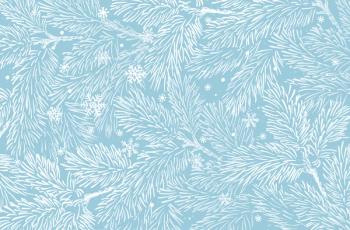
Innovative Technique Enables Comprehensive Analysis of Bromine, Iodine, and Other Components in Northern Hainan Island Soil
Researchers have utilized an integrated wavelength-dispersive and energy-dispersive X-ray fluorescence spectrometer technique to comprehensively analyze bromine, iodine, and other components in soil samples, demonstrating an innovative method for quantitative elemental analysis of complex matrix geological samples.
A new study published in Spectroscopy Letters examined soil samples from Hainan Island to analyze the bromine, iodine, and other components present in the soil (1). Led by Bin Liu, this study used an energy-dispersive (ED) and an integrated wavelength-dispersive (WD) X-ray fluorescence spectrometer (XRF) technique to accomplish this (1).
To conduct a thorough elemental analysis of the soil, the WDXRF and EDXRF techniques combined two different modes of XRF analysis (1). The researchers were hoping that by doing so, they could achieve improved sensitivity, expanded elemental coverage, and enhanced resolution (1).
Both WDXRF and EDXRF perform different functions; as a result, they offer distinct advantages from one another. WDXRF utilizes a crystal monochromator to disperse X-rays emitted from the sample into different wavelengths, allowing for precise measurement of specific elements (1). On the other hand, EDXRF detects X-rays based on their energy levels, providing simultaneous multi-element analysis (1).
The advanced technique used in this study offered an encouraging solution for analyzing elemental distribution in complex matrix geological samples (1). By using this technique in analyzing the diverse soil compositions found on northern Hainan Island, the researchers showed that it could be applied to many geological samples to conduct elemental analysis (1).
WDXRF was used to measure the amount of bromine in the soil (1). The team focused on measuring bromine content in the soil. To ensure accurate results, a two-channel measurement approach was implemented, with the average value of the two measurements serving as the final result (1). This strategy effectively minimized fluctuations in low-bromine-content measurements (1).
The researchers also discovered that the soil samples from northern Hainan Island exhibited a significant concentration of iodine, ranging from a few µg/g to over 100 µg/g (1). The researchers found that using EDXRF was better for analyzing iodine in soil samples (1). The soil composition consisted of minerals such as kaolinite, ilmenite, rutile, anatase, and goethite. Notably, the titanium concentration in the soil samples was unusually high, reaching up to 15.05%, surpassing the range of the calibration curve (1).
The team developed custom reference materials and established matrix-matched measurement and calibration routines to address the challenge of matrix effects (1). This systematic mitigation of matrix effects optimized the quantification of elements like vanadium, barium, and major components in the soil samples from northern Hainan Island (1). The efficacy of the XRF spectrometer method was validated through a comparison with the analysis conducted using inductively coupled plasma–optical emission spectroscopy (ICP-OES) (1).
The successful application of the integrated WDXRF and EDXRF spectrometer technique showcases its potential for reliable and quantitative elemental analysis of complex matrix geological samples (1). By enabling comprehensive insights into the distribution of bromine, iodine, and other components in northern Hainan Island soil, this research paves the way for further advancements in the field of geological analysis and contributes to our understanding of soil composition and dynamics in the region.
Reference
(1) Li, X.; Yu, Z.; Liu, B.; Du, X.; Xu, J.; Bai, J. Determination of bromine, iodine, and other components in northern Hainan island soil. Spec. Lett. 2023, 56 (5), 238–248. DOI:
Newsletter
Get essential updates on the latest spectroscopy technologies, regulatory standards, and best practices—subscribe today to Spectroscopy.




